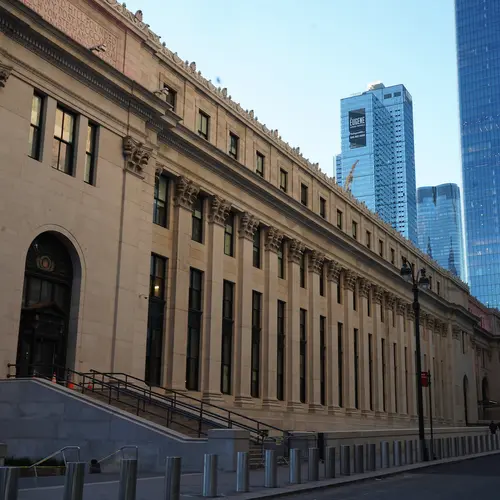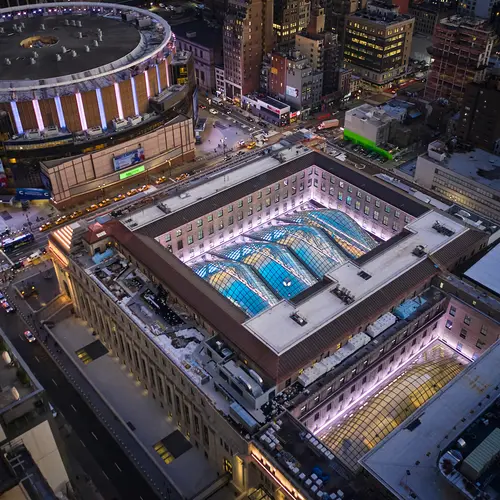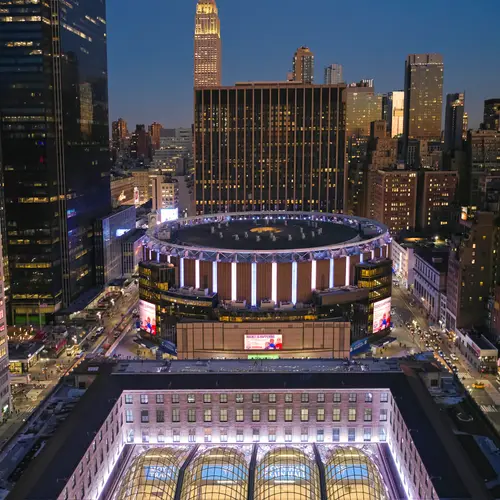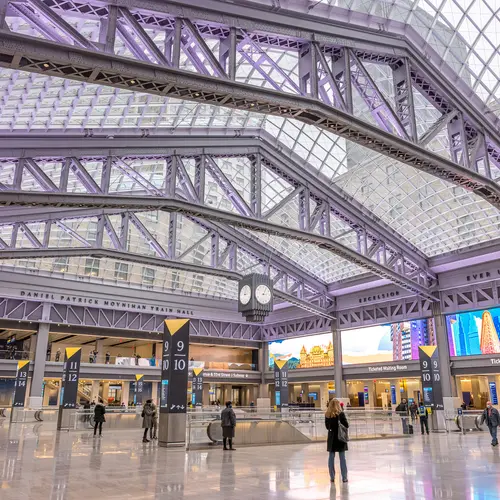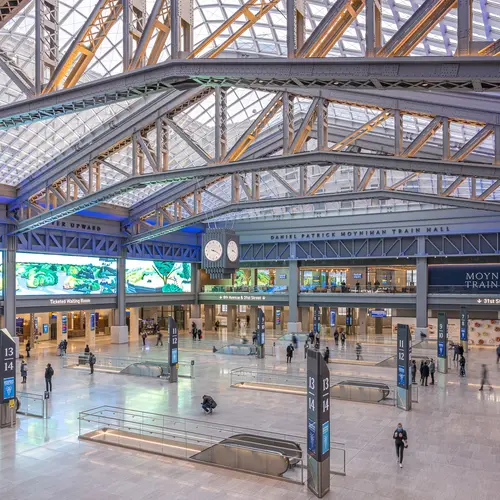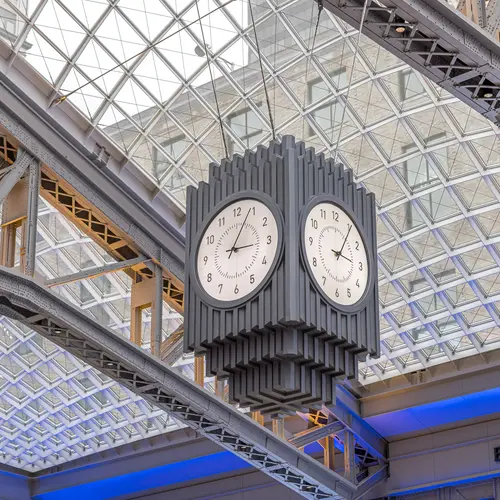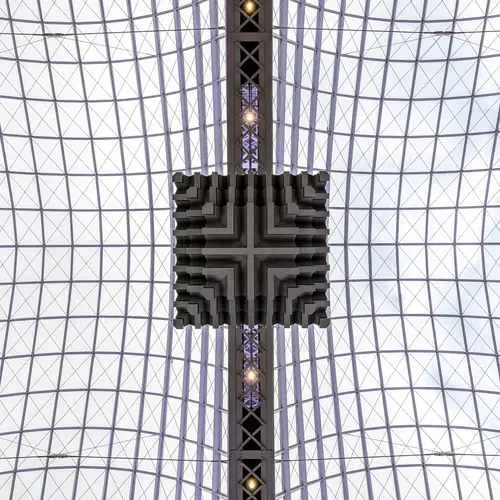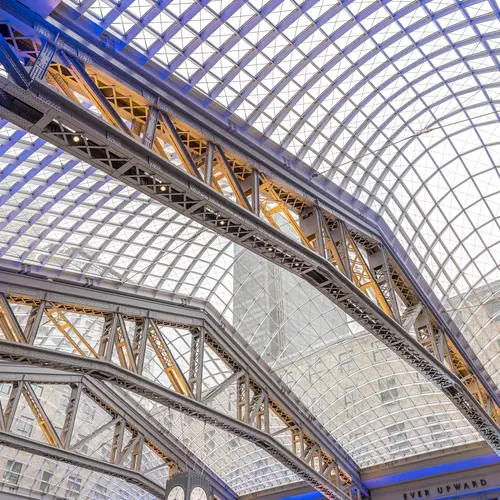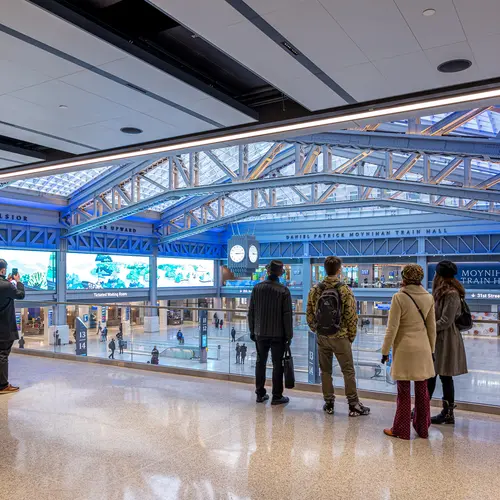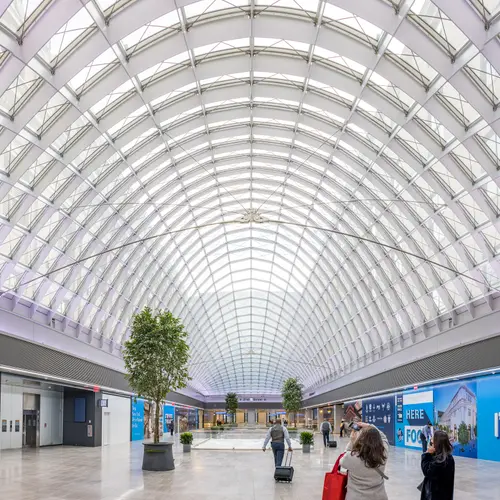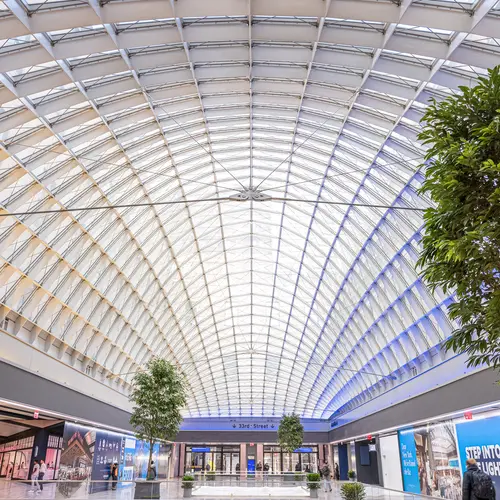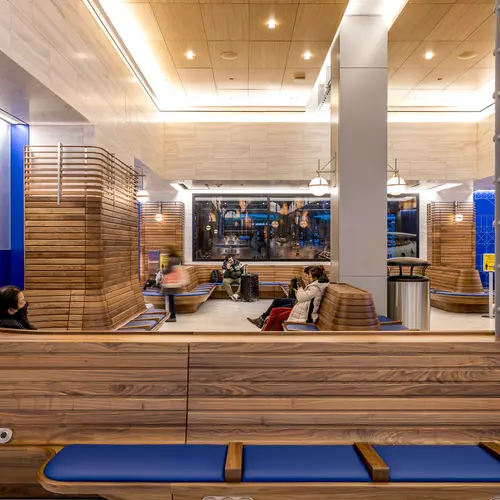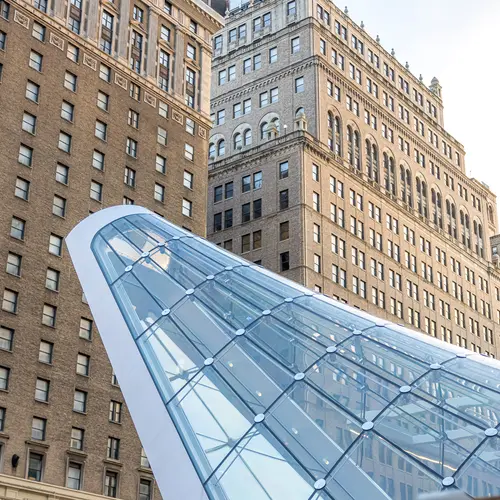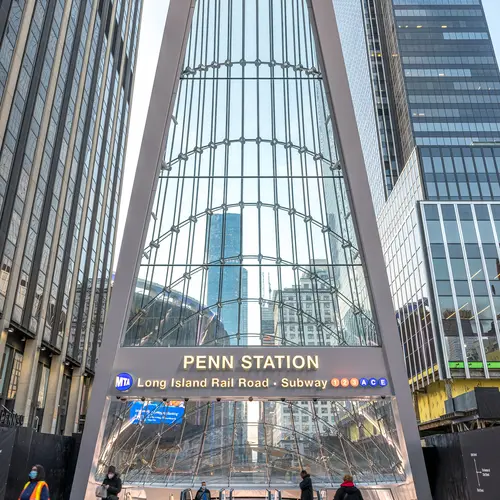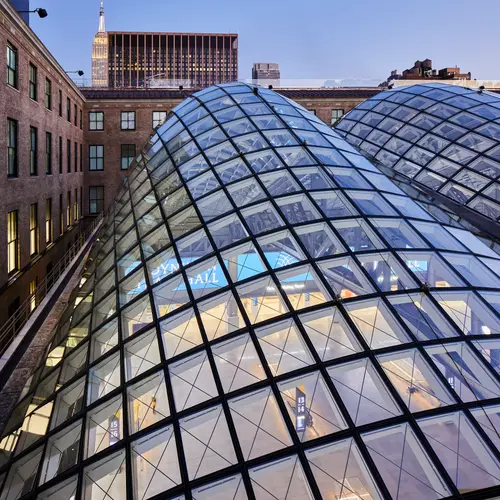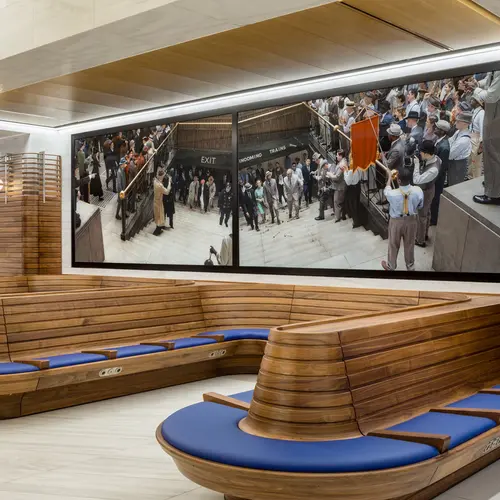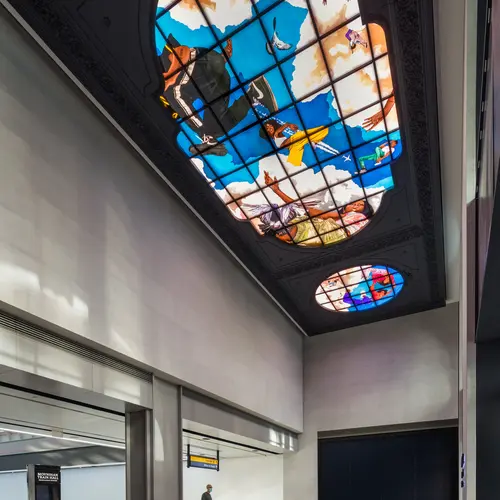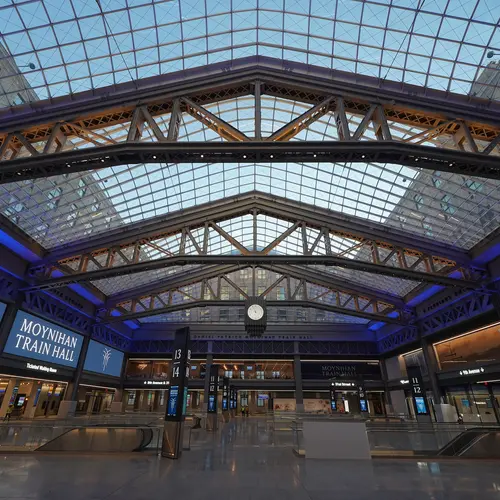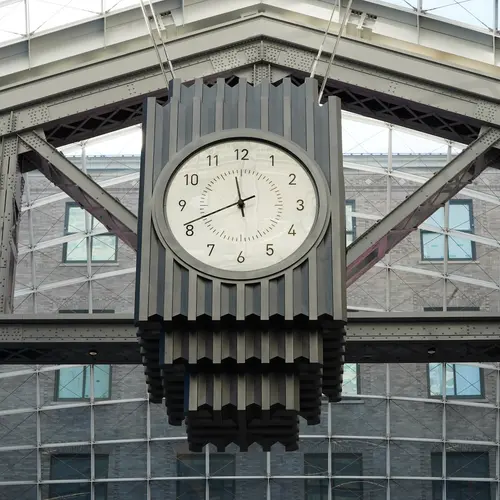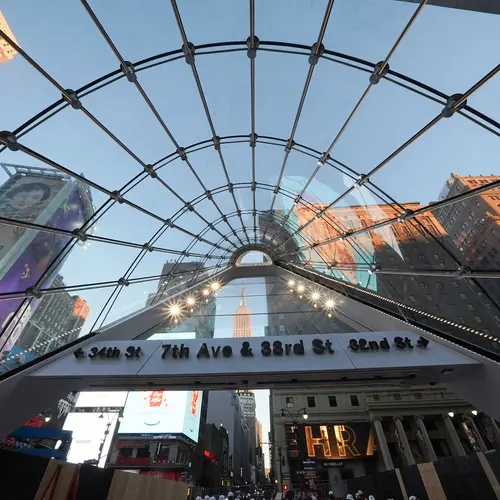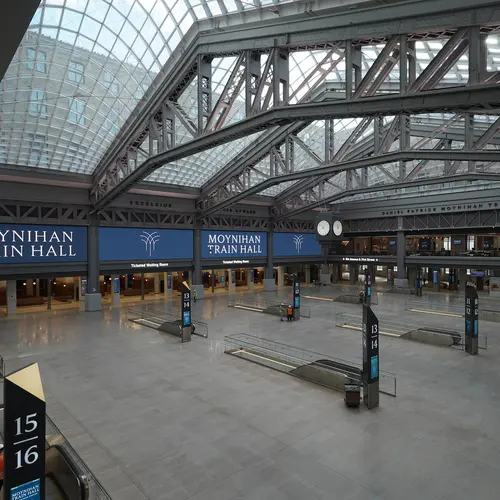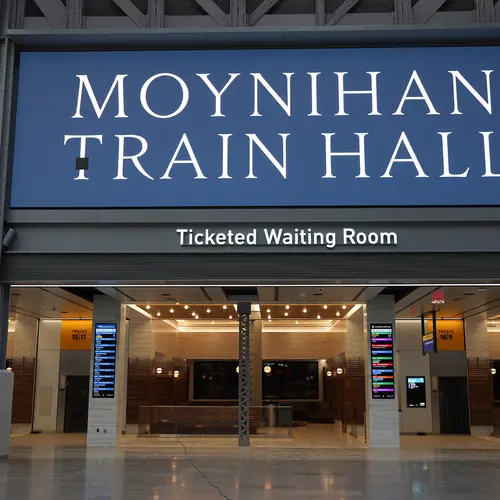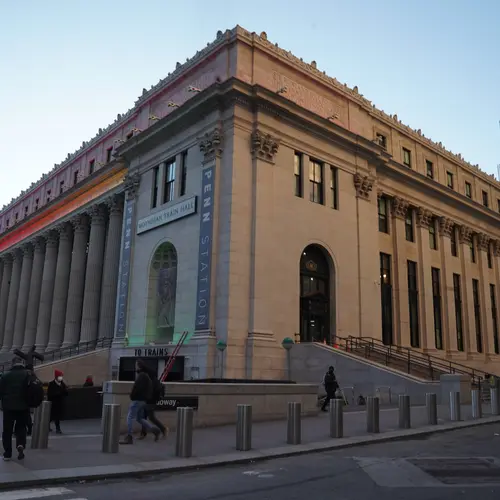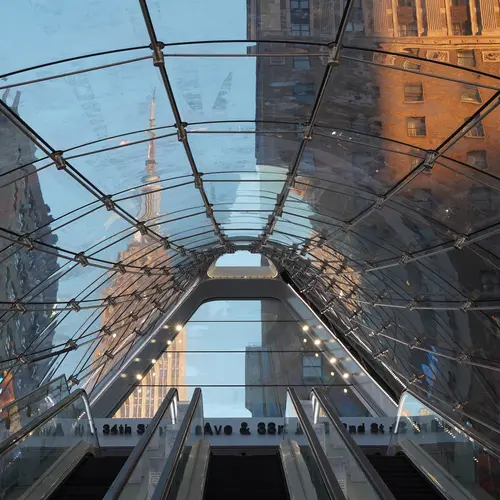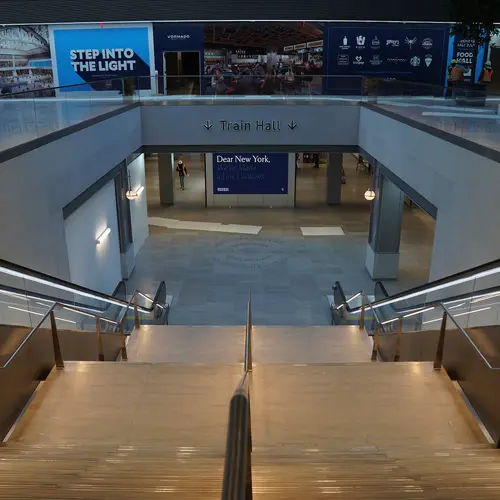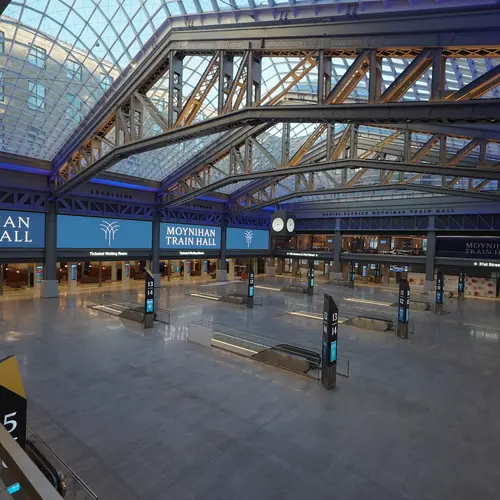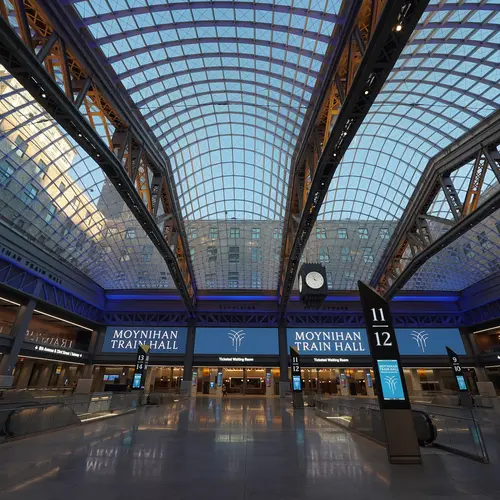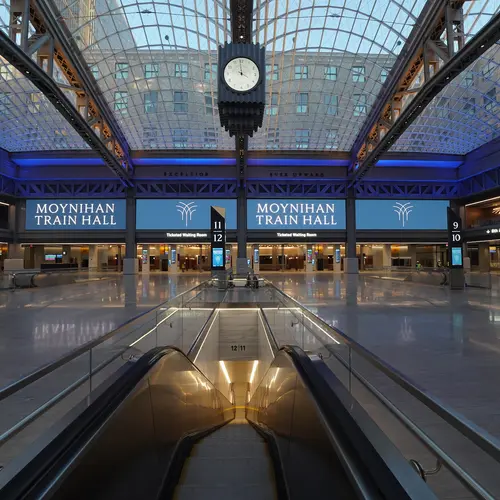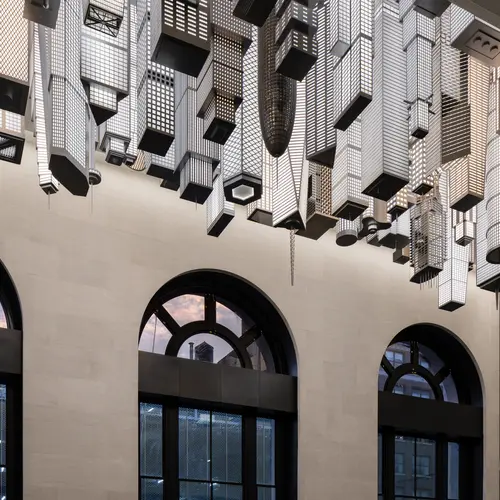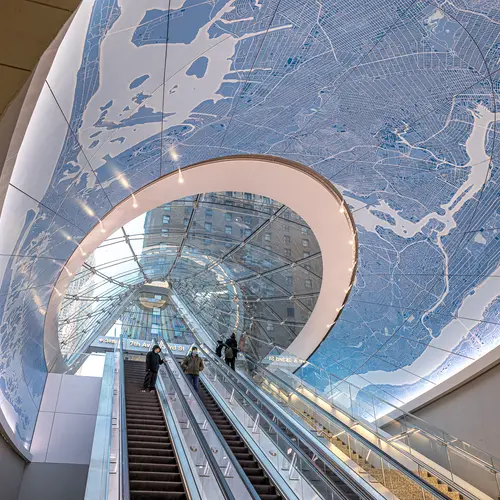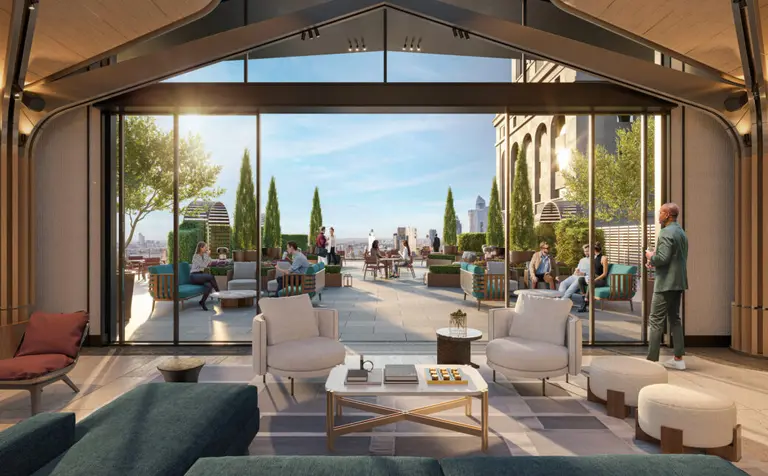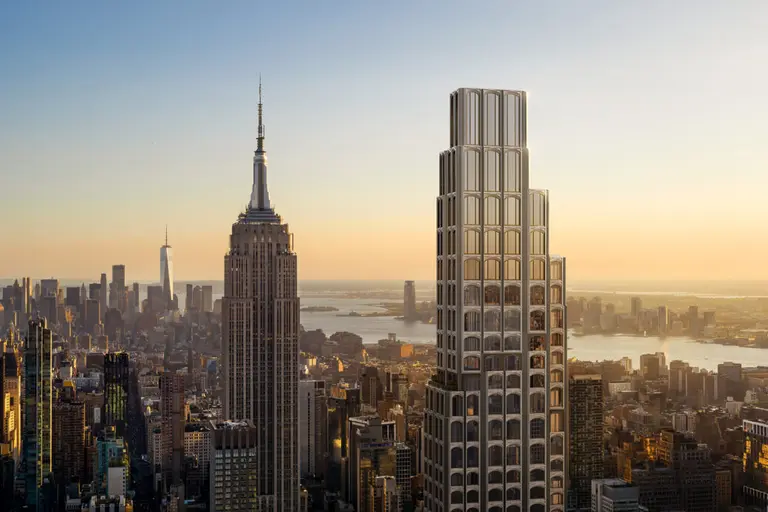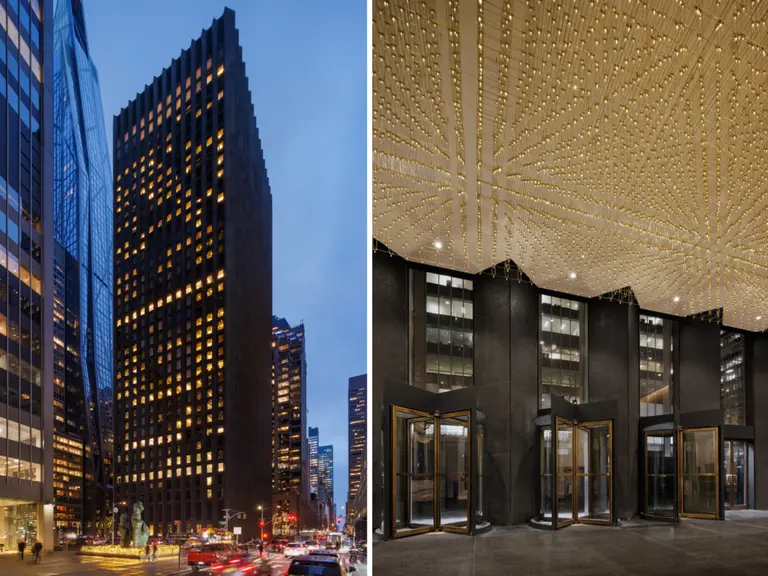See inside the new light-filled Moynihan Train Hall
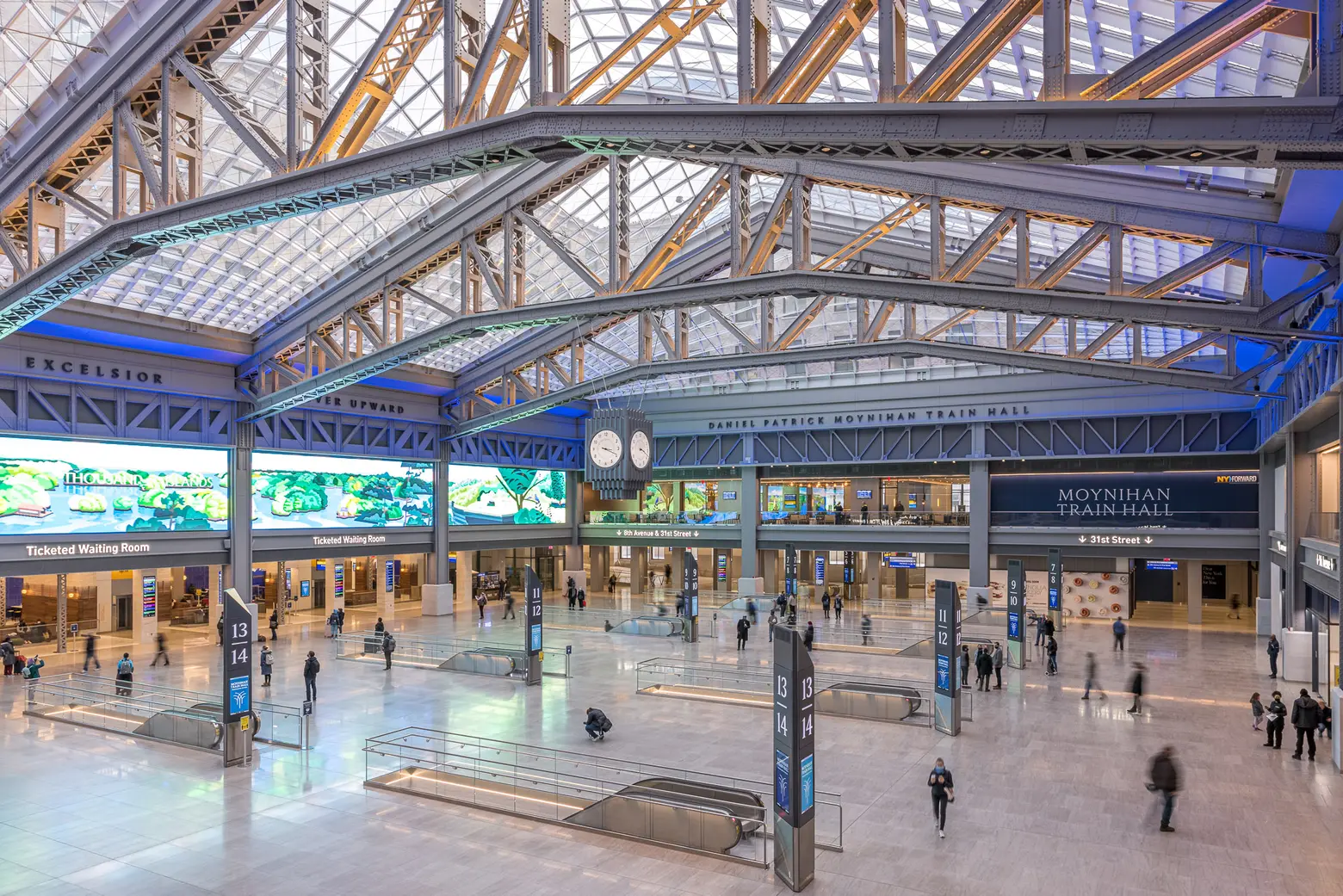
Photo © Max Touhey
As one of the few bright spots during a very dark time in New York, the new Moynihan Train Hall opens to the public on Friday. The new transit hub expands Penn Station into the landmarked James A. Farley Post Office Building on Eighth Avenue, increasing capacity at the busiest railroad station in the country by 50 percent. On Wednesday, Gov. Andrew Cuomo celebrated the opening of Moynihan Train Hall, which was inspired by the design of the original Penn Station that was demolished in the 1960s. Ahead, get a look inside the new train hall, including the 92-foot-high massive skylights that total one acre and the new waiting areas for the Long Island Rail Road and Amtrak.
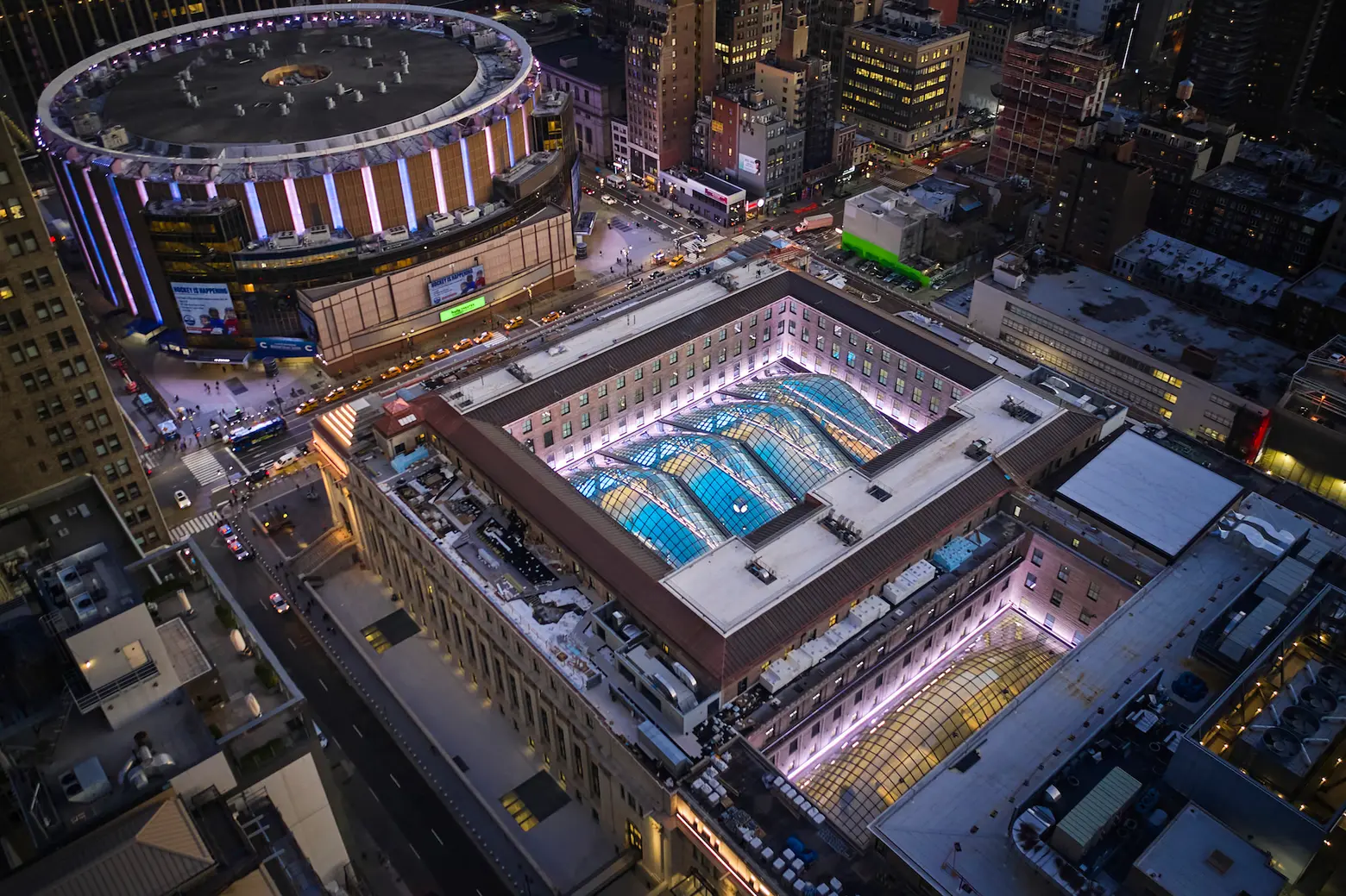
Photo: Lucas Blair Simpson | Aaron Fedor © SOM
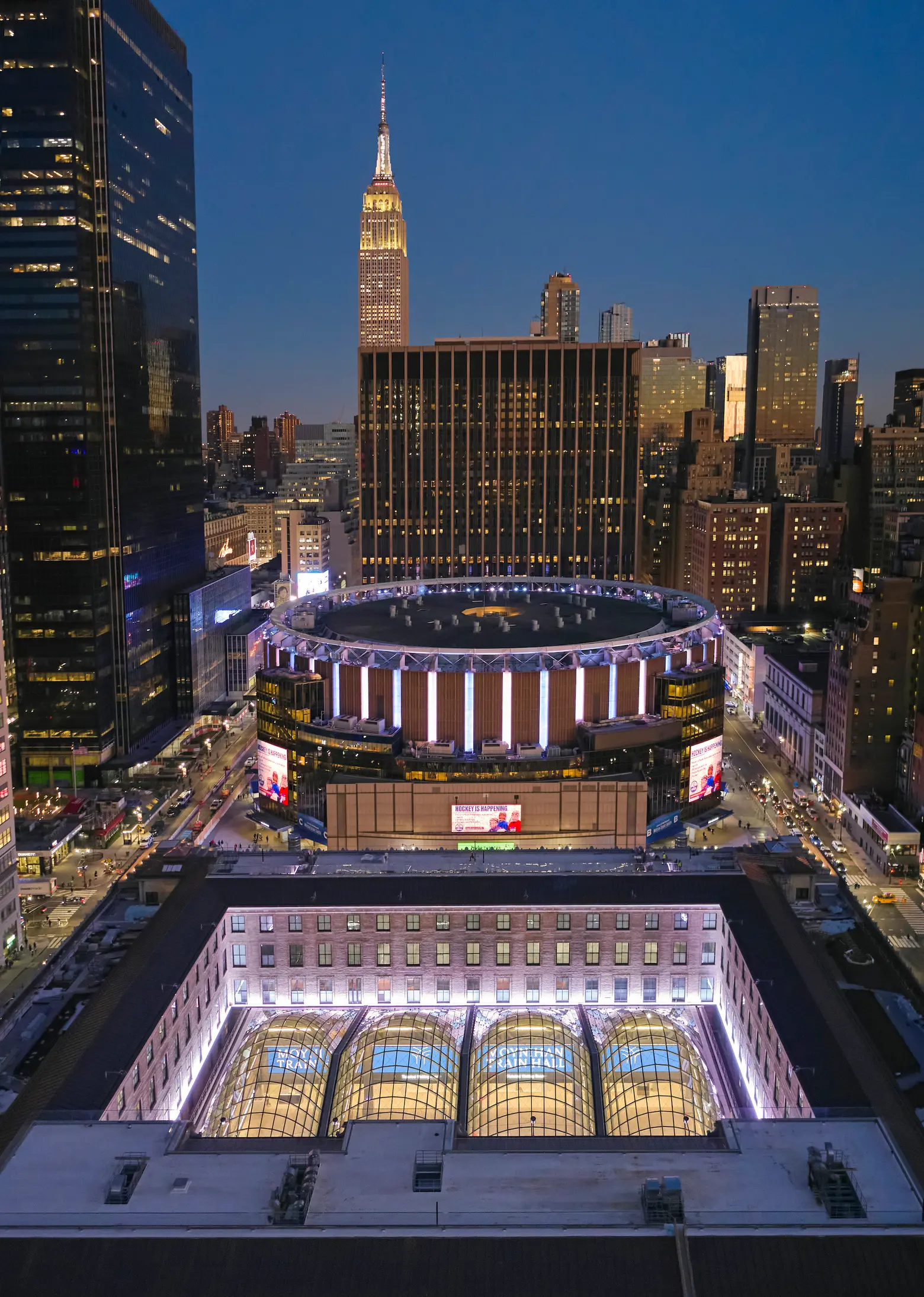
Photo: Lucas Blair Simpson | Aaron Fedor © SOM
Along with the state’s Empire State Development, a team made up of Vornado Realty Trust, Related Companies, Skanska USA, and architecture firm Skidmore, Owings & Merrill kicked off construction of the project in 2017. Moynihan Train Hall is connected to Penn Station by passageways underground and houses Amtrak and the Long Island Rail Road.
“Senator Daniel Patrick Moynihan was a man of true vision. He saw the potential in an underutilized post office and knew that if done correctly, this facility could not only give New York the transit hub it has long deserved, but serve as a monument to the public itself,” Cuomo said during the event on Wednesday.
“We built this as a statement of who we are, and who we aspire to be. Is it grand? Yes. Is it bold? Yes, because that is the spirit of New York and that is the statement we want to make to our visitors, to our children and to future generations. As dark as 2020 has been, this new hall will bring the light, literally and figuratively, for everyone who visits this great city,” the governor said.
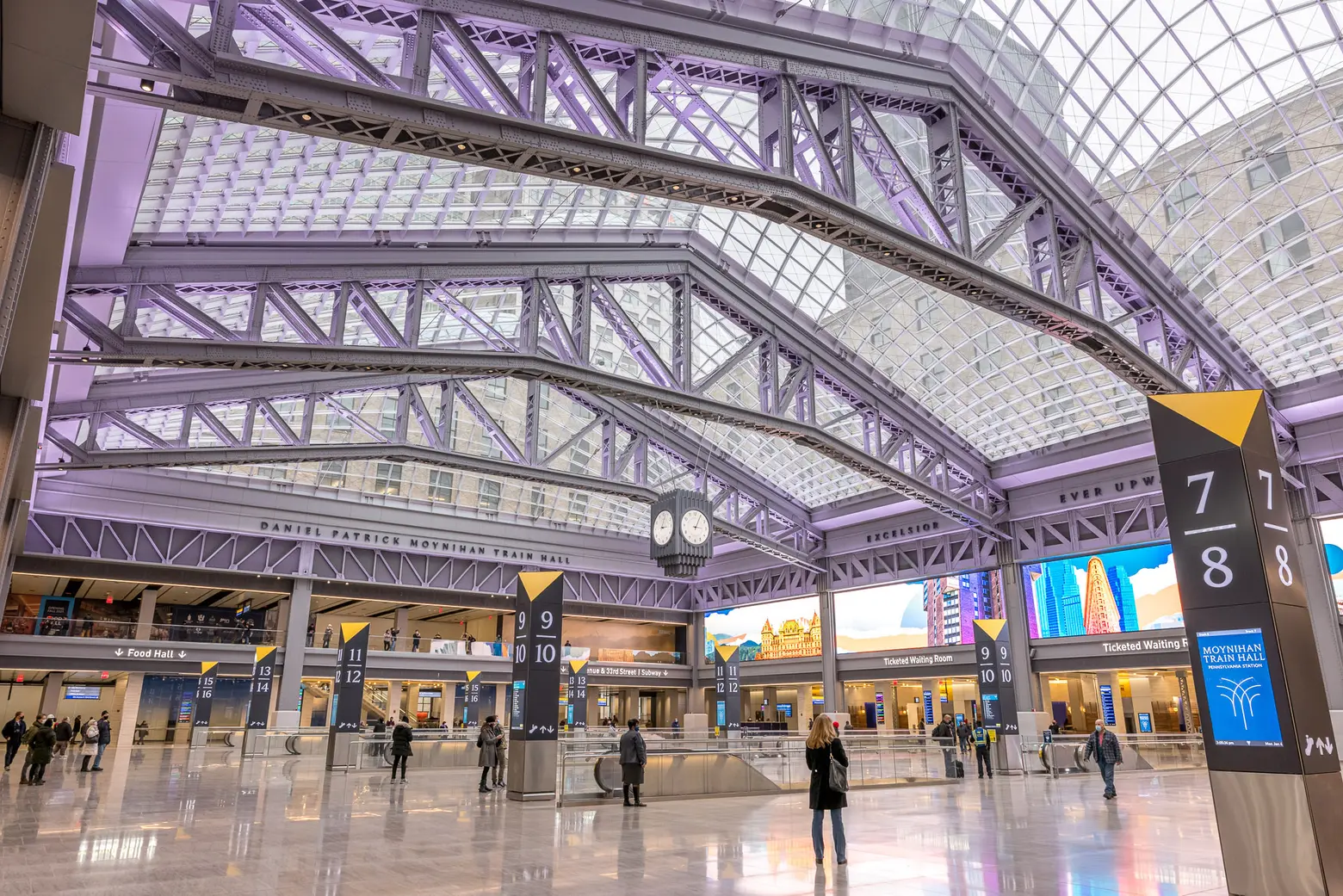
Photo © Max Touhey
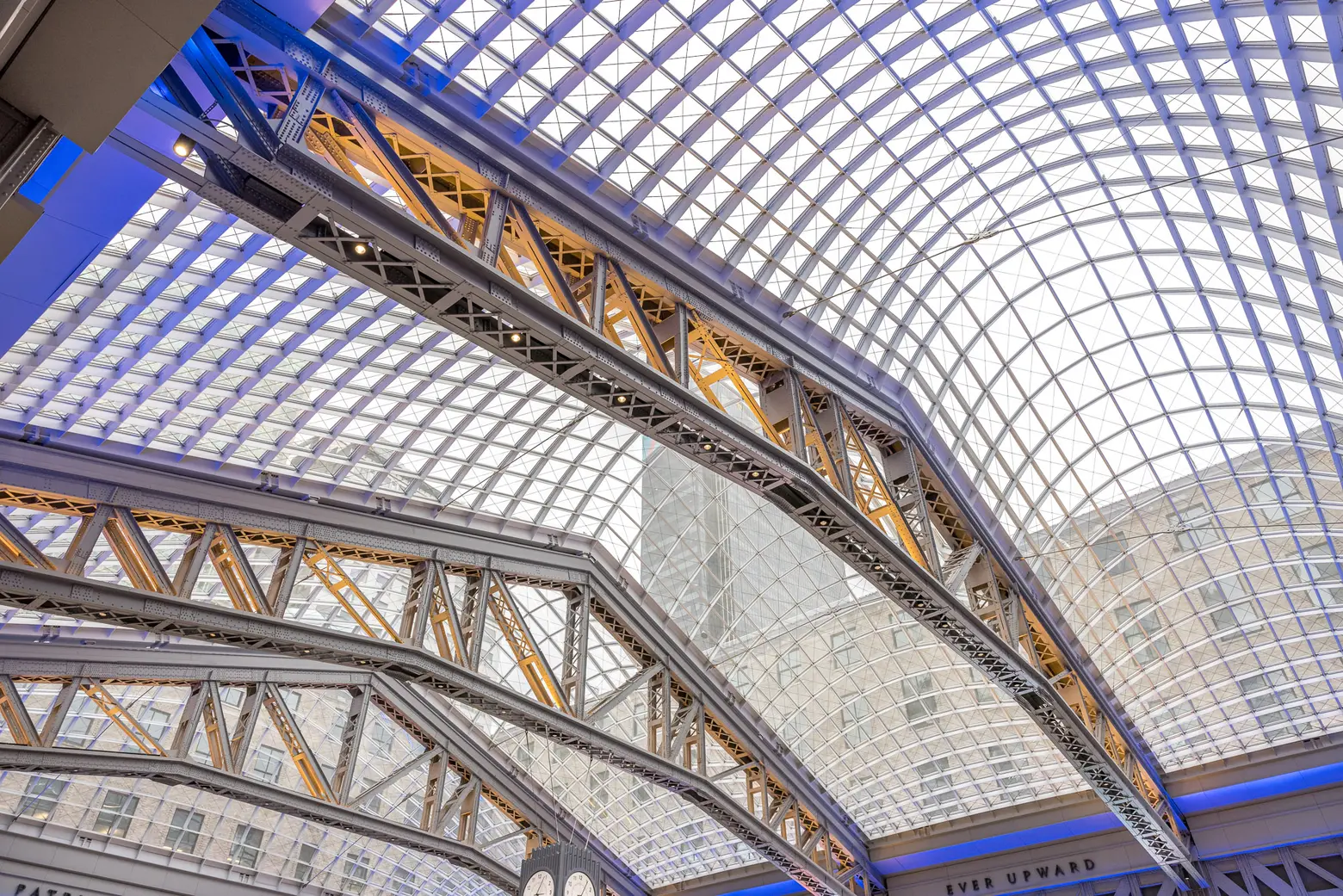
Photo © Max Touhey
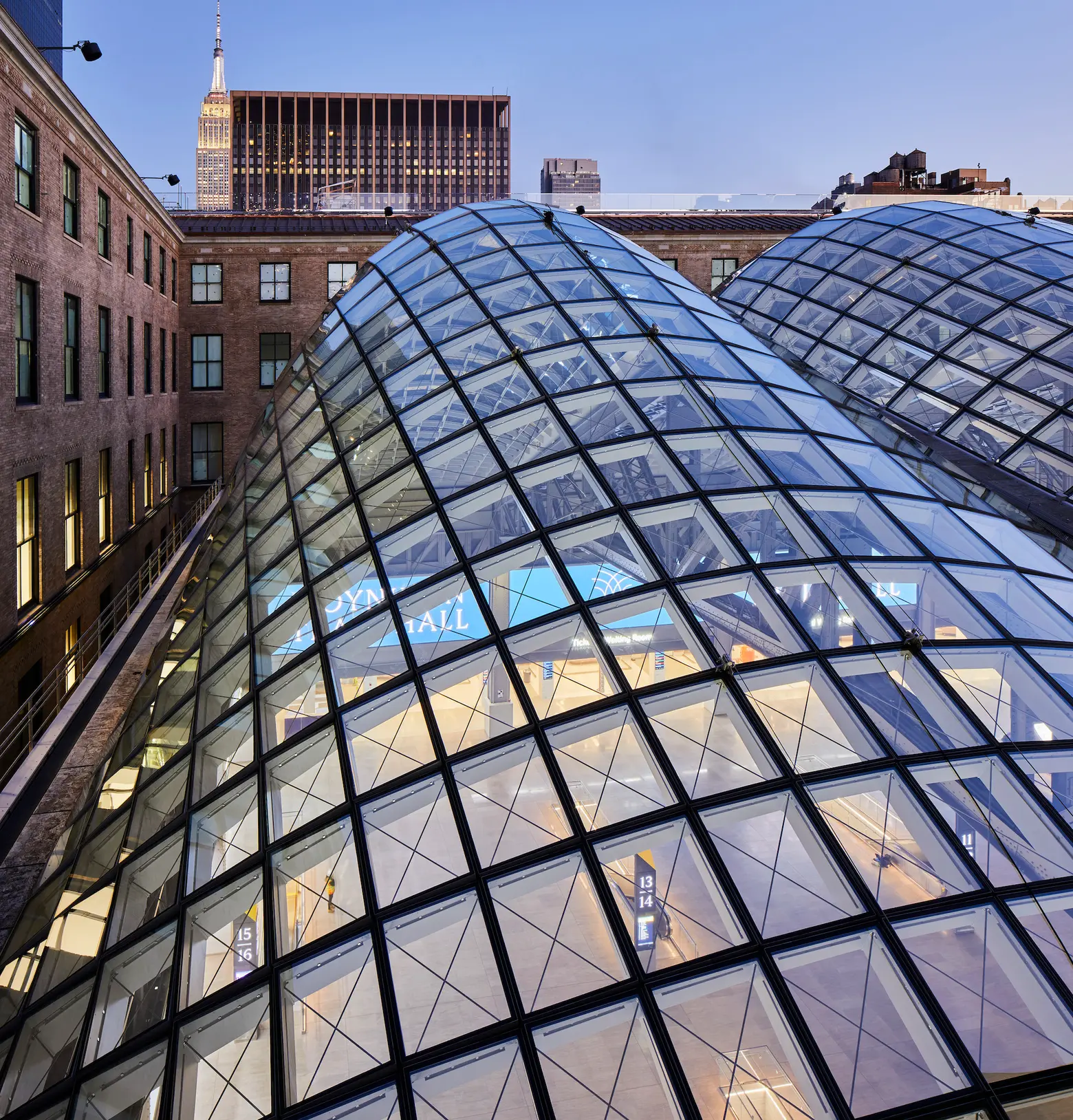
Photo: Lucas Blair Simpson | Aaron Fedor © SOM
SOM has been a part of this project, first proposed by late U.S. Senator Daniel Patrick Moynihan, for over two decades. The new train hall features an incredible skylight that crown the new concourse. When the structure was built in 1913, the postal workers who were sorting mail needed natural light to see what they were doing, explaining why the entire ceiling was a skylight, as 6sqft previously reported.
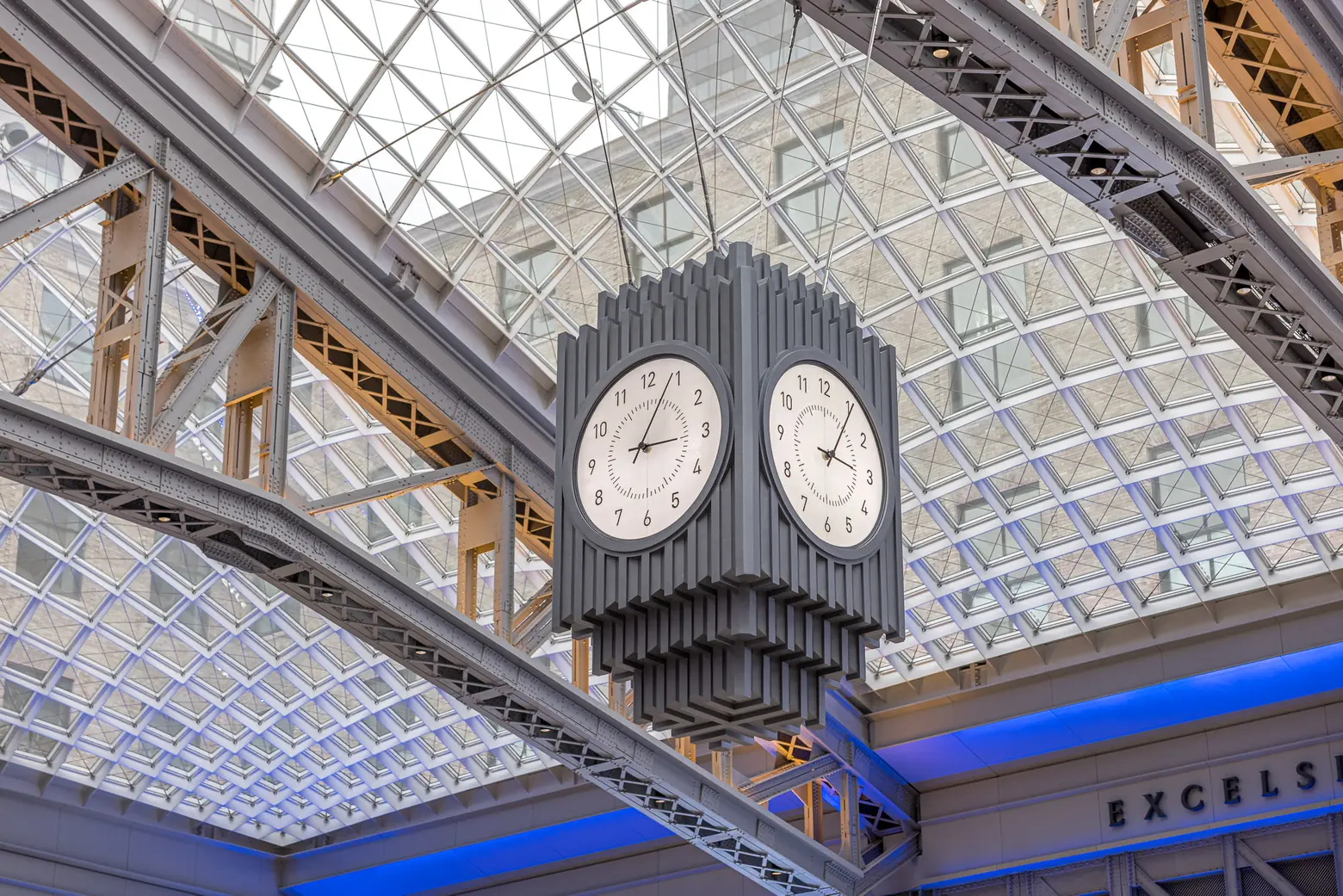
Photo © Max Touhey
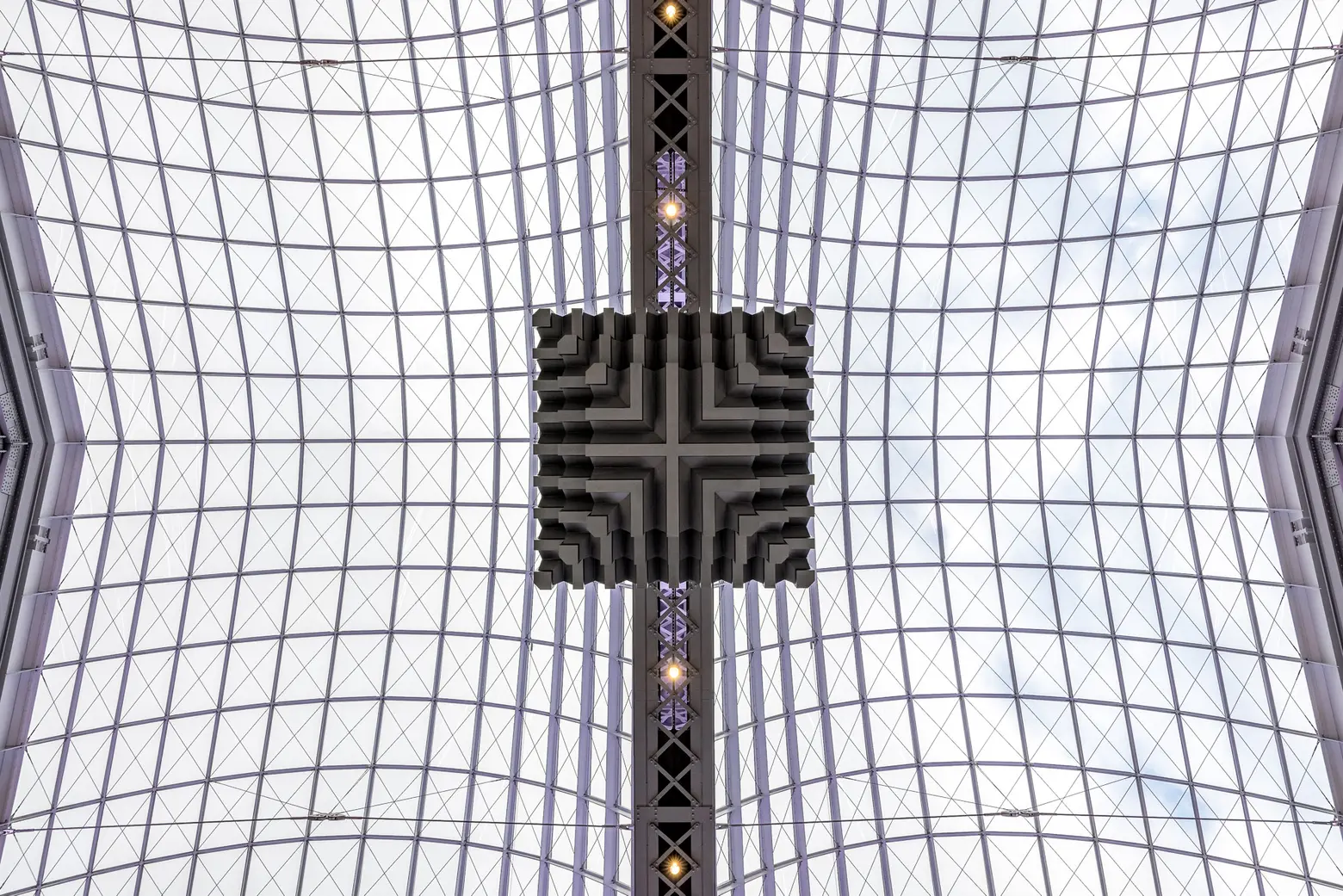
Photo © Max Touhey
The architects chose to highlight the building’s original three massive steel trusses in their design to “add an extra sense of lightness” to the transit hub while also showcasing the workmanship. The trusses each contain lighting fixtures to keep the hall bright at night. On the middle truss, there’s a new clock designed by Pennoyer Architects and inspired by analog clocks found in the original Penn Station.
“This is an incredibly important moment in the history of New York City,” Colin Koop, SOM partner, said in a statement. “We’ve designed a place that evokes the majesty of the original Penn Station, all while serving as a practical solution to the issues that commuters in, to and from New York have endured for too long. By connecting to our architectural past through the adaptive reuse of the Farley Post office building, we are breathing new life into New York, and recreating an experience no one has had here in decades.”
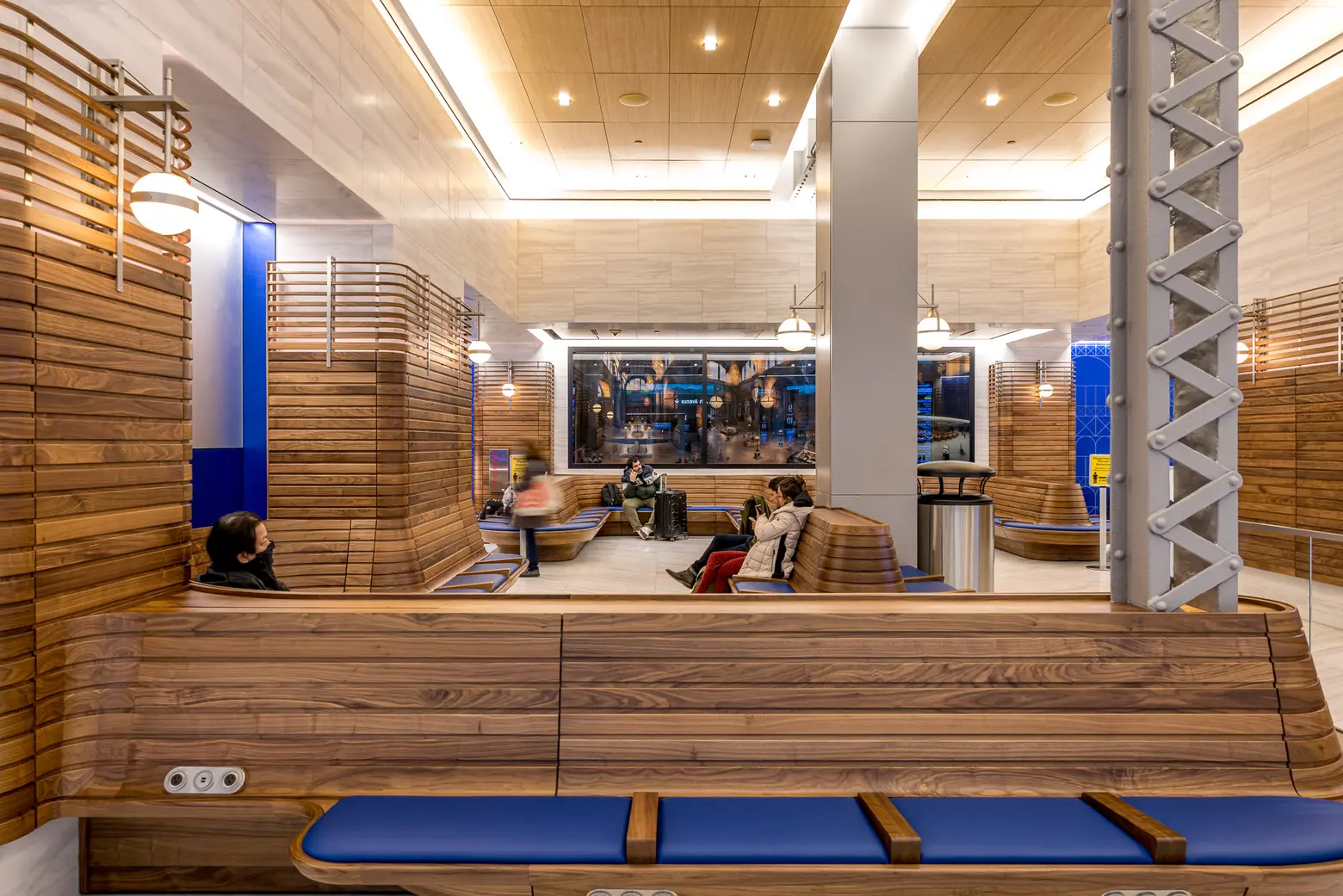
Photo © Max Touhey
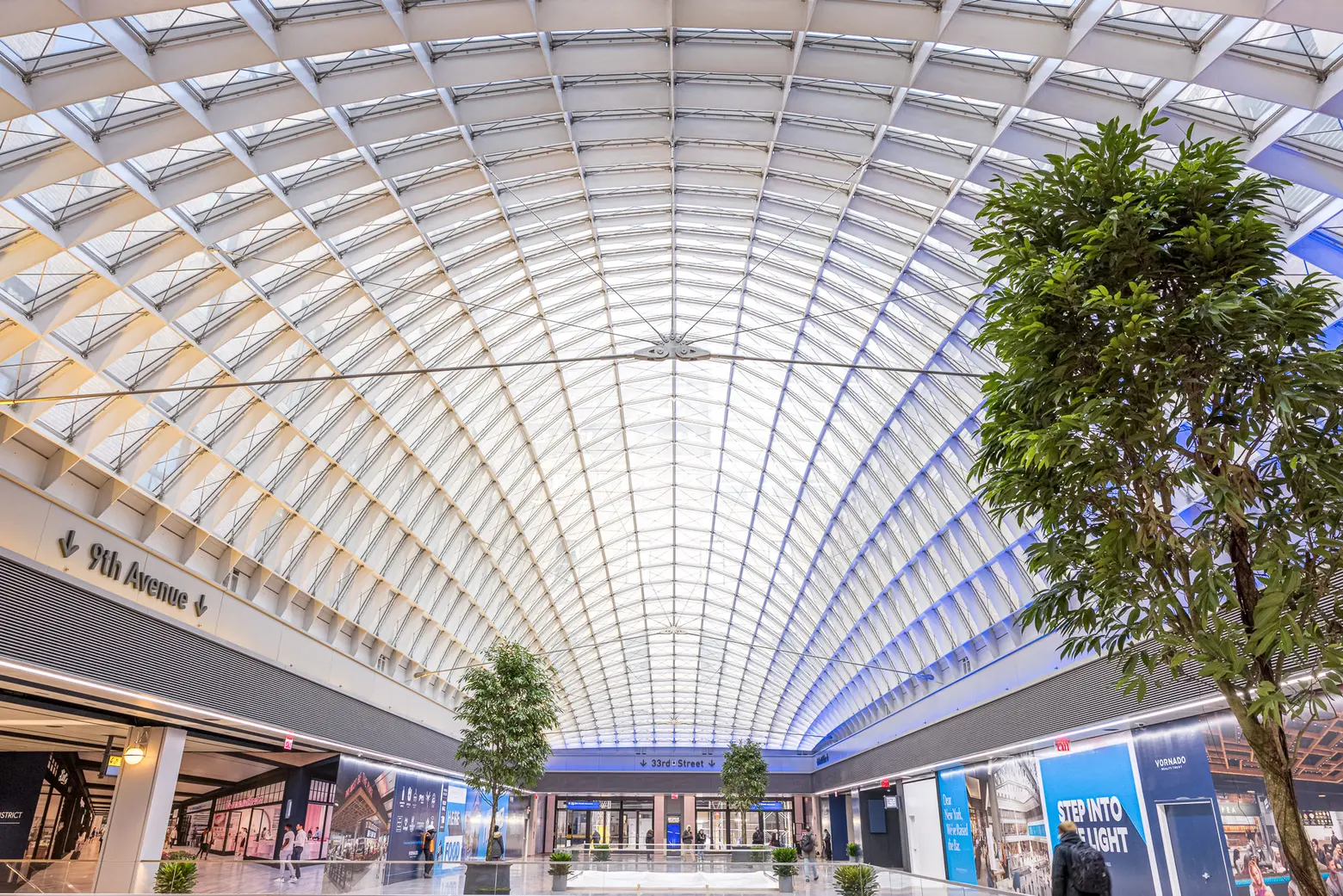
Photo © Max Touhey
Designed by the Rockwell Group, the Amtrak waiting area on the concourse level includes wooden seating and fixtures inspired by the old Penn Station. FX Collaborative designed the amenity-filled Amtrak Metropolitan Lounge and a food hall from Elkus Manfredi and retail space surrounds the concourse on two floors above. Measuring over 255,000 square feet, the train hall will be larger than Grand Central’s main concourse. There is free public WiFi throughout the transit center and a dedicated lounge for nursing mothers.
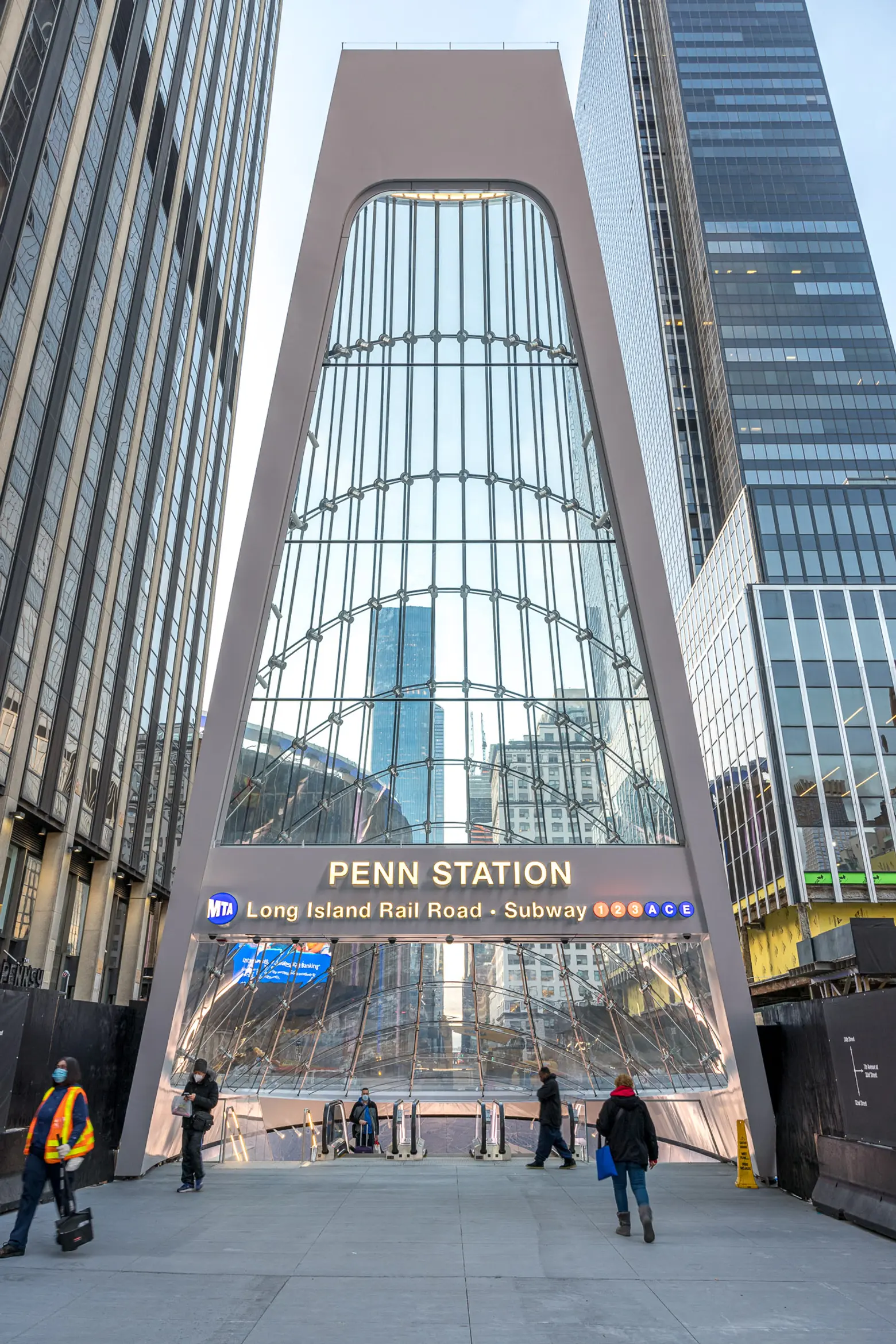
Photo © Max Touhey
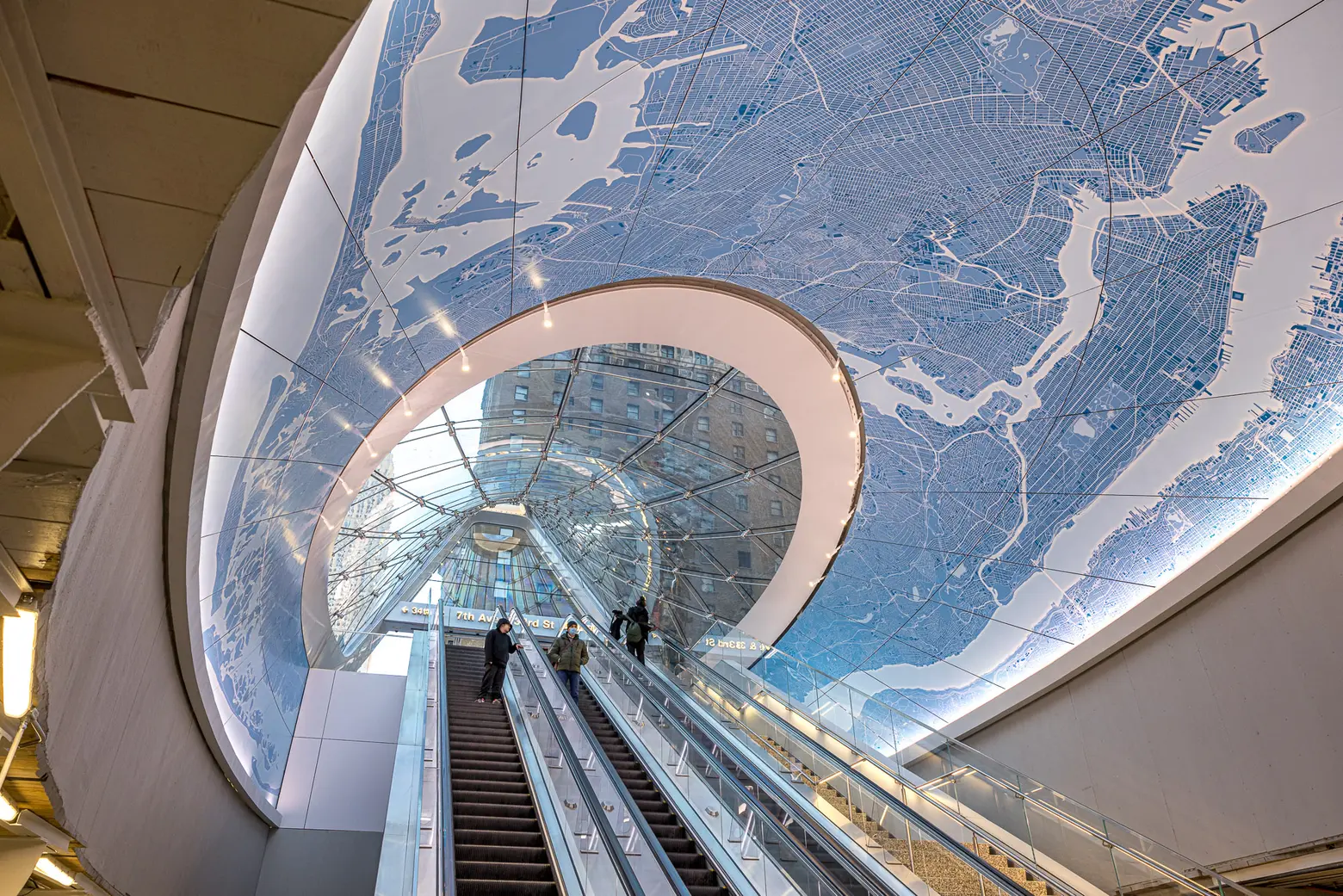
Photos © Max Touhey
Moynihan Train Hall connects to nine platforms and 17 tracks that service the Long Island Railroad and Amtrak. Cuomo announced in January a proposal to revamp Penn Station further by expanding it southward to create the Empire Station District. The plan would create a new terminal south of the existing site and add eight new tracks, increasing train capacity by 40 percent at the station.
“The Moynihan Train Hall is one of the most significant passenger rail facilities to open in years, and has been decades in the making,” Pete Buttigieg, Transportation Secretary-designate, said in a statement. “The newly renovated Hall — in a space which was mostly abandoned for the better part of two decades — will be a shining jewel in the Northeast Corridor, and is a terrific example of the results that are possible when federal government comes together with state and local leadership.”
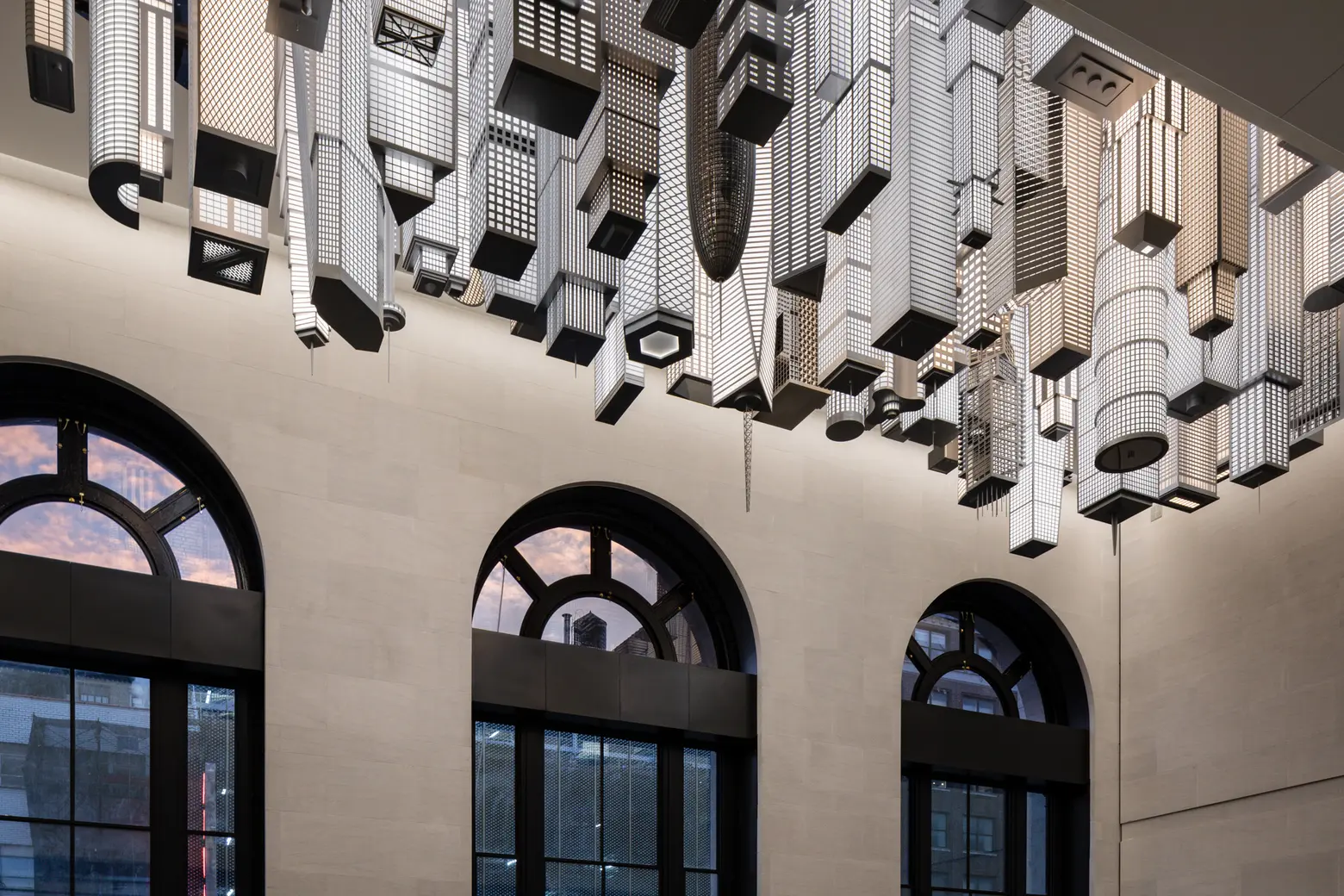
Elmgreen & Dragset, “The Hive,” 2020. Stainless steel, aluminum, polycarbonate, LED lights, and lacquer. Commissioned by the Empire State Development in partnership with Public Art Fund for Moynihan Train Hall. Photo: Nicholas Knight, courtesy of Empire State Development & Public Art Fund, NY.
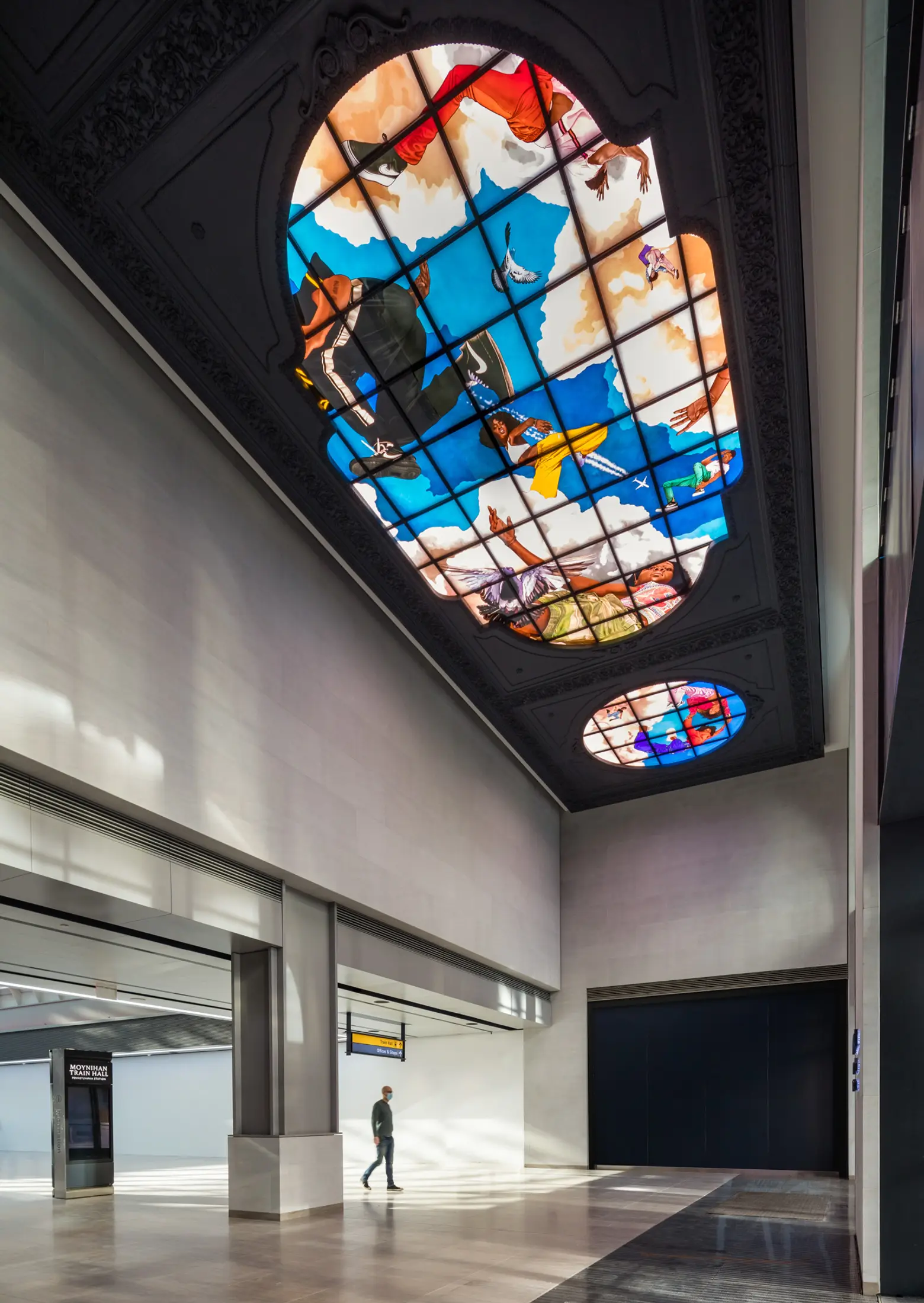
Kehinde Wiley, “Go” 2020. © Kehinde Wiley. An original work of art commissioned by the Empire State Development in partnership with Public Art Fund for Moynihan Train Hall. Photographer: Nicholas Knight. Image courtesy of the Artist: Sean Kelly, New York, Empire State Development and Public Art Fund, NY.
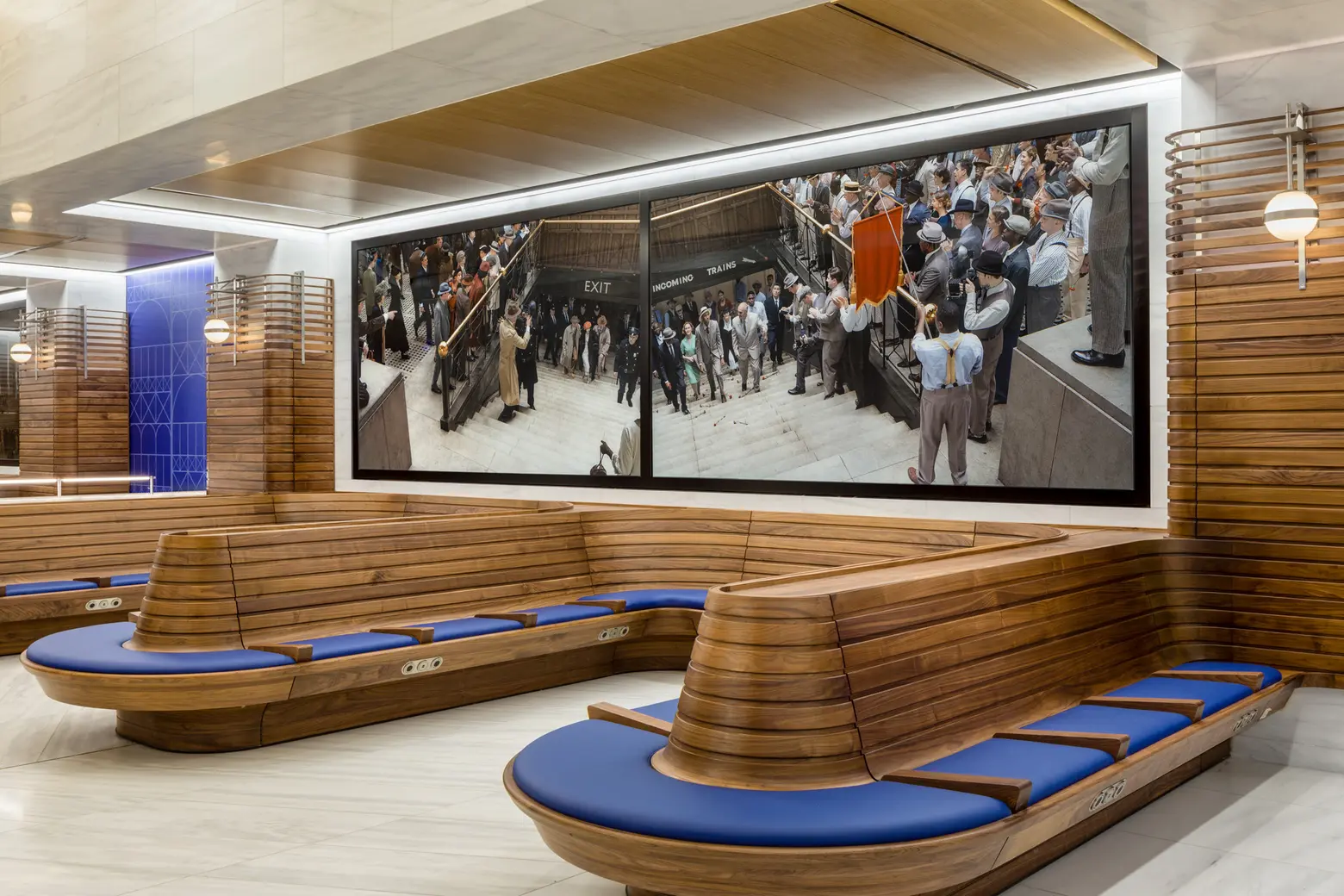
Stan Douglas, “22 April 1924 and 7 August 1934,” from “Penn Station’s Half Century,” 2020. Ceramic link on glass. One of nine photographic panels from “Penn Station’s Half Century.” Commissioned by Empire State Development in partnership with Public Art Fund for Moynihan Train Hall. © Stan Douglas. Courtesy of the artist, Victoria Miro, and David Zwirner. Photo: Nicholas Knight, courtesy of Empire State Development and Public Art Fund, NY.
The transit hub also features permanent art installations from three leading artists, Stan Douglas, Kehinde Wiley, and Elmgreen & Dragset. As part of a partnership between the Empire State Development and the Public Art Fund, the three large-scale commissions touch on the history of the site and the city as a whole.
“Nothing could be more fitting for a great metropolitan transit hub than three astonishing works of art that stop us in our tracks. Each one dazzles with its sheer beauty, epic scale, and technical mastery. Collectively, they also remind us that great art comes from great ideas,” Nicholas Baume, Director & Chief Curator of Public Art Fund, said.
“Each artist has thought deeply about the history, context, significance, and future of this newly transformed place, creating brilliantly innovative works of art that allow us to see ourselves – past, present, and future – in a truly civic space.”
RELATED:
- NYC’s new Moynihan Train Hall will open January 1
- First look at Amtrak’s new amenity space in revamped Moynihan Train Hall
- Cuomo releases new renderings of Moynihan Station as major construction gets underway
Photos courtesy of Max Touhey unless otherwise noted
